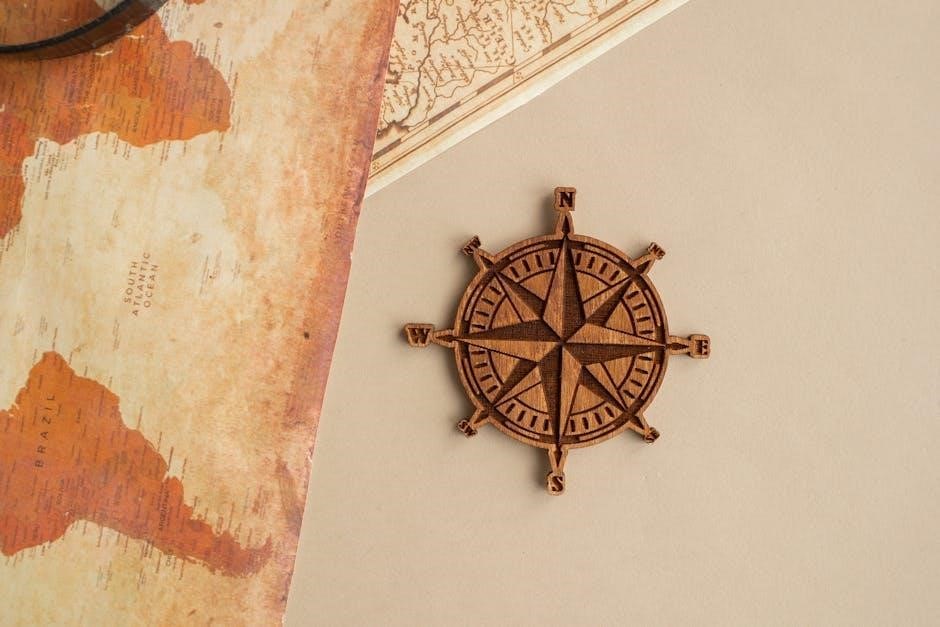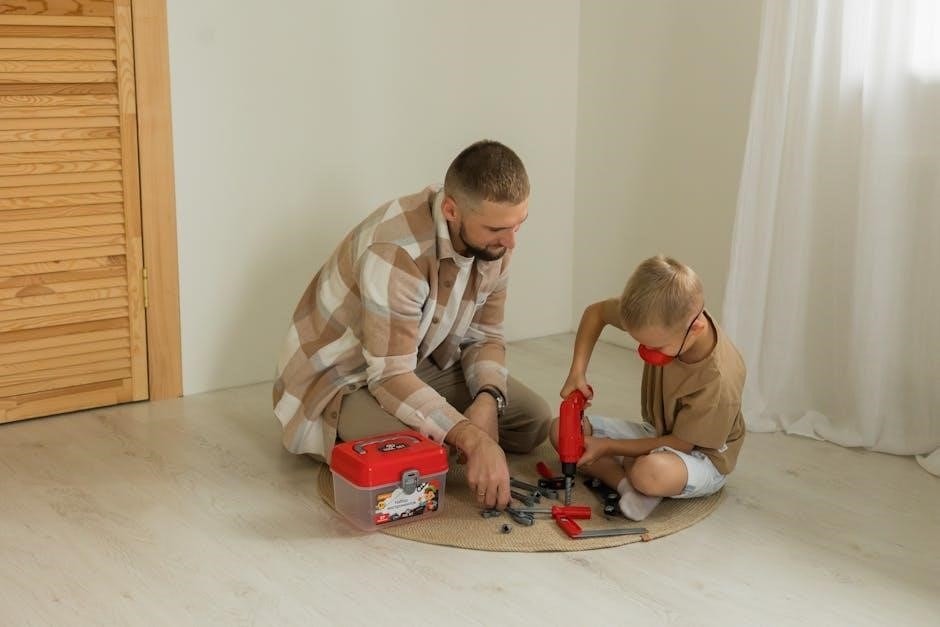
-
By:
- collin
- No comment
womenswear size guide
Understanding women’s wear size guides is essential for finding the perfect fit. This guide helps you navigate size charts‚ measurements‚ and international conversions to ensure accuracy and confidence when shopping online or in-store.
How to Measure Yourself for Women’s Clothing
Accurate measurements are key to finding your perfect size. Measure your bust‚ waist‚ hips‚ and inseam to ensure the best fit when shopping online or in-store without trying clothes on.
How to Measure Your Bust
To measure your bust accurately‚ wrap a flexible tape measure around the fullest part of your chest‚ keeping the tape level and parallel to the floor. Ensure the tape is not too tight or too loose. Place the tape under your armpits and across your nipple line. The measurement should be taken while standing upright and wearing a well-fitting bra. If the tape measure is not available‚ use a string or ribbon and compare it to a ruler. For the most accurate result‚ avoid sucking in your stomach‚ as this can distort the measurement. Take note of the measurement in inches or centimeters. Consistency is key‚ so always measure in the same way for reliable results. This measurement is crucial for determining your clothing size and ensuring the best fit.
Tips: Always measure over the same undergarments and ensure the tape is level for accurate sizing.
How to Measure Your Waist
To measure your waist accurately‚ locate the narrowest part of your torso‚ typically just above your belly button and below your ribcage. Stand up straight and relax your stomach. Wrap a flexible tape measure around this area‚ ensuring it is level and parallel to the floor. The tape should not be too tight or too loose; it should feel comfortable against your skin. Take note of the measurement in inches or centimeters. For the most accurate result‚ wear a thin shirt or no shirt at all to avoid adding bulk from clothing. If you don’t have a tape measure‚ use a string or ribbon‚ mark where it overlaps‚ and then measure the length against a ruler. Consistency is key‚ so always measure in the same way. This measurement is vital for determining your clothing size and ensuring a flattering fit.
Tips: Avoid slouching or holding your breath‚ as this can distort the measurement. Stand naturally and ensure the tape measure remains horizontal for accuracy.
How to Measure Your Hips
To accurately measure your hip size‚ stand up straight and relax your body. Locate the widest part of your hips‚ which is typically about 7-9 inches (18-23 cm) below your waistline. Wrap a flexible tape measure around this area‚ ensuring it is level and parallel to the floor. The tape should not be too tight or too loose; it should feel comfortable against your skin. Take note of the measurement in inches or centimeters. For the most accurate result‚ wear a thin pair of pants or underwear‚ or no clothing at all‚ to avoid adding bulk. If you don’t have a tape measure‚ use a string or ribbon‚ mark where it overlaps‚ and then measure the length against a ruler. Consistency is key‚ so always measure in the same way. This measurement is crucial for determining your clothing size‚ especially for pants‚ skirts‚ and dresses.
Tips: Stand naturally and avoid slouching or holding your breath‚ as this can distort the measurement. Ensure the tape measure remains horizontal for accuracy.
How to Measure Your Inseam
To measure your inseam‚ stand upright and place the end of a flexible tape measure at the top of your inner thigh‚ just below your crotch. Extend the tape measure straight down along the inside of your leg‚ following the natural curve of your body‚ until it reaches the bottom of your anklebone. Ensure the tape measure is not twisted or bunched up and lies flat against your skin. Take note of the measurement in inches or centimeters. For accuracy‚ wear the type of shoes or heels you plan to pair with the clothing‚ as this will affect the length. If you don’t have a tape measure‚ you can use a ruler or a piece of string to mark the length and then measure it against a ruler.
Tips: Keep your legs slightly apart for an accurate reading. If you’re measuring for pants‚ consider whether you prefer a longer or shorter break (how the fabric folds at the bottom). Measure both legs and use the average if there’s a slight difference. This ensures the best fit for tailored clothing.

Understanding Women’s Clothing Size Charts
Women’s clothing size charts provide standardized measurements for bust‚ waist‚ hips‚ and inseam. Sizes vary by brand and region‚ so comparing your measurements to the chart ensures the best fit.
Standard Women’s Size Charts
Standard women’s size charts are designed to guide garment selection based on body measurements. They typically include measurements for bust‚ waist‚ and hips‚ with sizes ranging from XS to XL or numbered sizes like 2-16.
These charts help consumers determine their size by comparing their measurements to the chart. For example‚ a bust measurement of 34 inches might correspond to a size 6‚ while a 38-inch bust might be a size 10. Waist and hip measurements are also aligned with these sizes to ensure a balanced fit.
While standard charts vary slightly between brands and regions‚ they provide a general framework for sizing. Understanding your measurements and how they align with the chart is key to selecting well-fitting clothing. Always refer to the specific chart provided by the brand for the most accurate results.
Plus-Size Women’s Size Charts
Plus-size women’s size charts cater to individuals with larger body measurements‚ typically starting from size 14 or 16 and extending to sizes like 22 or 24.
These charts are designed to accommodate curvier figures‚ with measurements adjusted for bust‚ waist‚ and hips to ensure a comfortable and flattering fit. Unlike standard sizes‚ plus-size charts often include more gradations to better serve diverse body types.
When using plus-size charts‚ it’s important to measure accurately‚ as slight differences can affect fit. Many brands now offer extended size ranges‚ making fashion more inclusive. Always check the specific chart provided by the brand‚ as sizing can vary slightly.
Plus-size charts emphasize the importance of body positivity and representation‚ ensuring that all women can find stylish and well-fitting clothing regardless of size.

International Women’s Clothing Size Conversion
International clothing sizes vary by region due to different measurement standards. Understanding these differences is crucial for accurate shopping‚ especially when buying from international brands‚ and using size charts or conversion tools can ensure the best fit.
US‚ UK‚ and EU Size Differences
Understanding the differences between US‚ UK‚ and EU women’s clothing sizes is essential for international shopping. While the numbers or labels may appear similar‚ the measurements behind them vary significantly. In the US‚ sizes are based on a unique system that differs from the UK and EU‚ which often follow metric measurements. For example‚ a US size 8 corresponds roughly to a UK size 12 and an EU size 38‚ but this can vary depending on the brand. These discrepancies arise from historical sizing methods and regional body type assumptions. Shoppers should consult size charts or conversion tools to ensure accuracy. Additionally‚ some brands offer dual sizing‚ making it easier to transition between regions. Awareness of these differences helps avoid ill-fitting clothing and enhances the online shopping experience. Always verify measurements before making a purchase‚ as even within regions‚ sizing can vary by brand.

Factors That Affect Fit in Women’s Clothing
Factors like body type‚ posture‚ fabric stretch‚ and personal measurement accuracy significantly impact clothing fit. Weight distribution and style designs also play a role in achieving the perfect fit.
How Body Type Influences Size
Your body type plays a crucial role in determining your clothing size and fit. Common body types include pear-shaped‚ apple-shaped‚ hourglass‚ and rectangular. Each type has distinct measurements that affect how clothes fit. For example‚ pear-shaped individuals have larger hips and thighs‚ while apple-shaped bodies carry weight around the midsection. Hourglass figures have balanced bust and hip measurements‚ often with a narrower waist. Rectangular body types have similar measurements throughout. Understanding your body type helps you identify styles that flatter your shape‚ ensuring a better fit. Accurate measurements and awareness of your body type are essential for selecting the right size‚ as sizes can vary between brands and styles. This knowledge also helps address fit issues and ensures garments skim the body appropriately‚ creating a more tailored appearance. Recognizing how your body type influences size is key to achieving comfort and confidence in your clothing choices.

How to Choose Your Size When Shopping Online
Choosing the right size when shopping online involves a combination of accurate self-measurement‚ understanding brand sizing‚ and utilizing available tools and reviews. Start by taking your measurements‚ ensuring the tape is level and not too tight. Compare these measurements to the brand’s size chart‚ keeping in mind that sizes can vary between brands. Consider the fabric type—stretchy materials may offer more flexibility‚ while non-stretch fabrics require precise fits. Style also plays a role; loose-fitting items may be more forgiving‚ while tailored clothes need accuracy. Check customer reviews for insights on fit‚ and look for features like size recommendation tools or virtual try-ons. Be aware of return and exchange policies in case the fit isn’t perfect. Finally‚ explore tools or apps that help determine your size based on your measurements and brand charts. Being methodical and patient ensures the best fit‚ making the effort worthwhile for comfort and confidence.

Common Fit Issues in Women’s Clothing and How to Solve Them
Common fit issues in women’s clothing often stem from improper sizing or body type mismatches. One issue is garments that gape at the buttons or feel too tight across the bust‚ which can be solved by opting for a larger size or styles with adjustable closures. Another problem is pants that are too tight in the thighs but loose elsewhere‚ which can be addressed by choosing high-waisted styles or stretch fabrics. Shoulder seams that sit too far down the arm indicate the garment is too small‚ while sleeves that are overly long or short can be fixed with tailoring or roll-up styles. Hemlines that hit unflatteringly can be altered to create a balanced look. Addressing these issues often requires seeking alterations‚ selecting styles designed for your body type‚ or using shapewear for a smoother fit. These solutions help achieve a polished‚ comfortable look tailored to your unique proportions and preferences.

How to Read Women’s Clothing Size Labels
Understanding women’s clothing size labels is essential for selecting the right fit. Most labels feature a numerical or alphabetical size‚ such as 8 or M‚ which corresponds to standard size charts. Some labels may include additional details like “P” for petite or “T” for tall to indicate the garment’s cut. Care symbols‚ like dots or letters‚ provide washing instructions‚ while country codes may denote international sizing standards. To interpret labels accurately‚ compare the size to your measurements and consider the fabric type‚ as stretchy materials may offer more flexibility. Always check the sizing chart provided by the brand‚ as sizes can vary between designers. Pay attention to phrases like “runs small” or “relaxed fit” for a better understanding of how the garment drapes. By deciphering these elements‚ you can make informed purchases and ensure a comfortable‚ flattering fit.

The Importance of Accurate Measurements for the Best Fit
Accurate measurements are the cornerstone of achieving the perfect fit in women’s clothing. They ensure that garments drape correctly‚ providing both comfort and confidence. Without precise measurements‚ clothes may be too tight‚ restricting movement‚ or too loose‚ appearing ill-fitting. Common issues like gapping buttons or puckering fabric often stem from incorrect sizing. Measurements also account for body proportions‚ ensuring a balanced silhouette. Over time‚ body changes can alter measurements‚ making regular remeasuring essential. By taking accurate measurements‚ individuals can avoid costly alterations and reduce the likelihood of returns when shopping online. Investing time in this process ensures a polished appearance and enhances overall satisfaction with purchases. Accurate measurements empower individuals to make informed choices‚ fostering a wardrobe that flatters and fits impeccably.

How Different Brands Size Women’s Clothing
Different brands often have varying approaches to sizing women’s clothing‚ which can lead to confusion for shoppers. While some brands adhere strictly to standard size charts‚ others may use vanity sizing or cater to specific body types. For instance‚ luxury brands might cut garments slightly smaller to create a more tailored look‚ while fast fashion brands may size more generously to appeal to a broader audience. Additionally‚ brands with global reach may adjust sizing to align with regional preferences. It’s common for shoppers to find they wear different sizes across brands‚ even if their measurements remain consistent. To navigate this‚ it’s essential to consult each brand’s size chart and read customer reviews for insights into fit. Understanding these variations helps consumers make informed purchases and ensures a better fit‚ regardless of the brand.

Tips for Altering Women’s Clothing to Achieve the Perfect Fit
Altering women’s clothing can make a significant difference in achieving a flawless fit. Start by identifying areas that need adjustment‚ such as shoulders‚ waist‚ or hemlines. Taking garments to a professional tailor is often the best option for precise alterations. For minor adjustments‚ consider DIY techniques like shortening hems‚ taking in seams‚ or letting them out for a looser fit. Adding darts or panels can enhance shape and structure‚ while adjusting straps or buttons can improve comfort. For ill-fitting pants‚ altering the inseam or waistband can resolve issues. When shopping‚ opt for pieces with adjustable features‚ such as waistbands with belt loops or dresses with ties. Incorporating stretchy fabrics or elastic can also provide a more forgiving fit. Remember‚ alterations are an investment in your wardrobe‚ ensuring clothes look great and feel comfortable. With a few tweaks‚ you can transform ill-fitting garments into tailored pieces that flatter your silhouette perfectly.